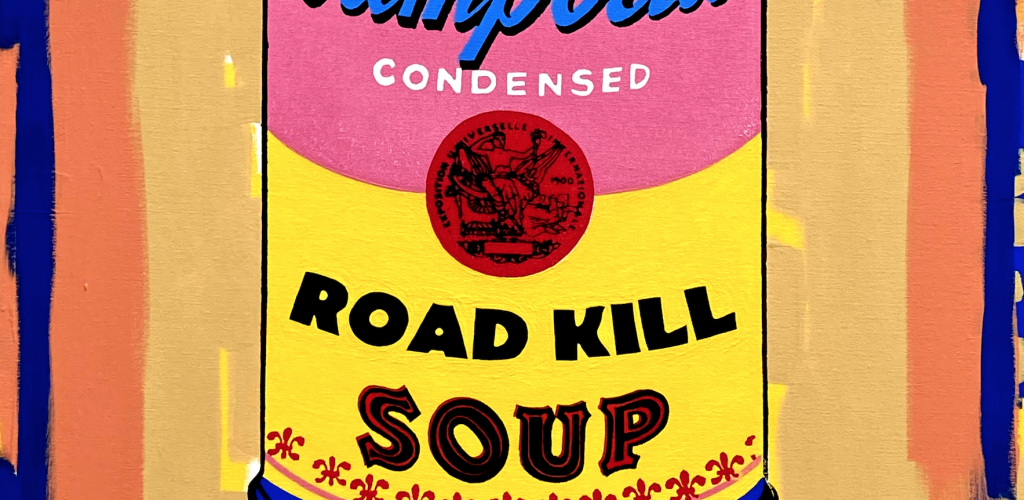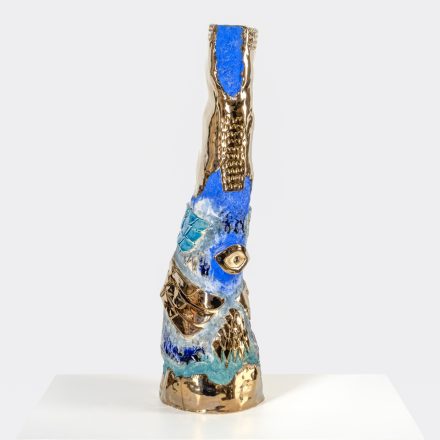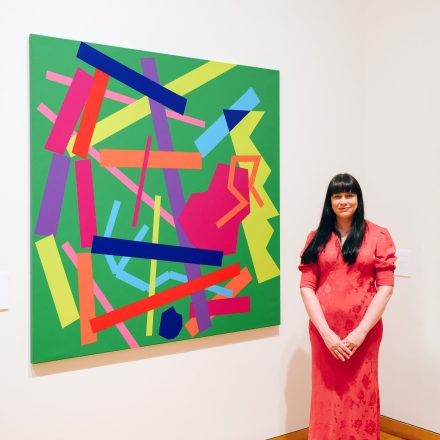We’re delighted to release four new works by Darwin-based artist Franck Gohier. Typical of the artist’s use of humour and appropriation, these works playfully question identity and Aussie culture. Can we identity ourselves, en mass, by cuisine? What if Warhol grew up in the Top End?
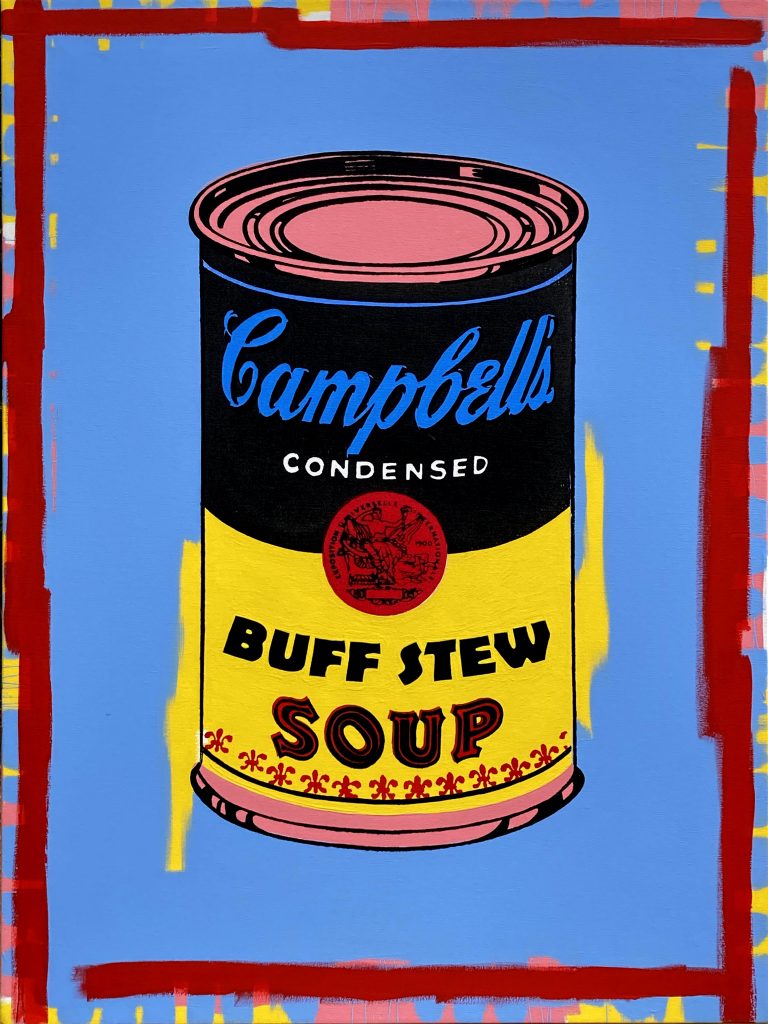

Appropriation and iconoclasm important to your work. These paintings are an appropriation of Warhol’s famous soup cans. What is the importance, or meaning of appropriation in your work?
When my parents emigrated from France to Australia in 1972 they brought with them a sea chest full of Franco/Belgian comics: Asterix & Obelix,Tintin, Lucky Luke,Iznogoud, Blake & Mortimer, Yoko Tsuno, The Smurfs etc. I learnt to draw at a young age by copying these comic book characters verbatim into drawing journals. Years later in the late 80s, as an undergrad art student, I learnt from Pop Art that certain images/products are associated with socio/cultural/historical/political/philosophical meanings that consumers attach to them.I use these familiar visual icons to draw in the viewer, who has preconceived associations, and then subvert their associations to deliver my particular message. It’s the same concept as using bait when you’re fishing.
Can you tell us more about some of the ‘ingredients’ or ‘flavours’ displayed on your soup cans?
The series of ‘soup can’ Artworks are ultimately about identity. What is it to be ‘Australian’ today particularly given the multiculturalism of my home town, Darwin, with its large Indigenous population, white settlers, and close proximity to SE Asia? I also have my own cultural heritage being born in France. My father, at times, was a cook and chef. If I was going to identify what it is to be Australian via cuisine what would that look like? Appropriating Andy Warhol’s Campbell’s soup cans seemed an opportune vehicle for that discussion.
How does being in the top end inform your practice?
Living in relative isolation allows my art practice to not be too distracted by whatever is happening elsewhere. My Artwork stems mostly from the vitality of lived experiences, the day to day of my environment and the interaction of visitors in the studio.
In the past you’ve mentioned that your work often comments on the faults and frailties of contemporary society – can you speak more to this?
All of us humans, to a greater or lesser extent, are flawed and a little bit mad. I am interested in examining how we all navigate our interpersonal interactions and making commentary about it through artworks. I’m a self confessed introvert, so I spend a lot of time in the studio on my own making observations about myself and other humans.
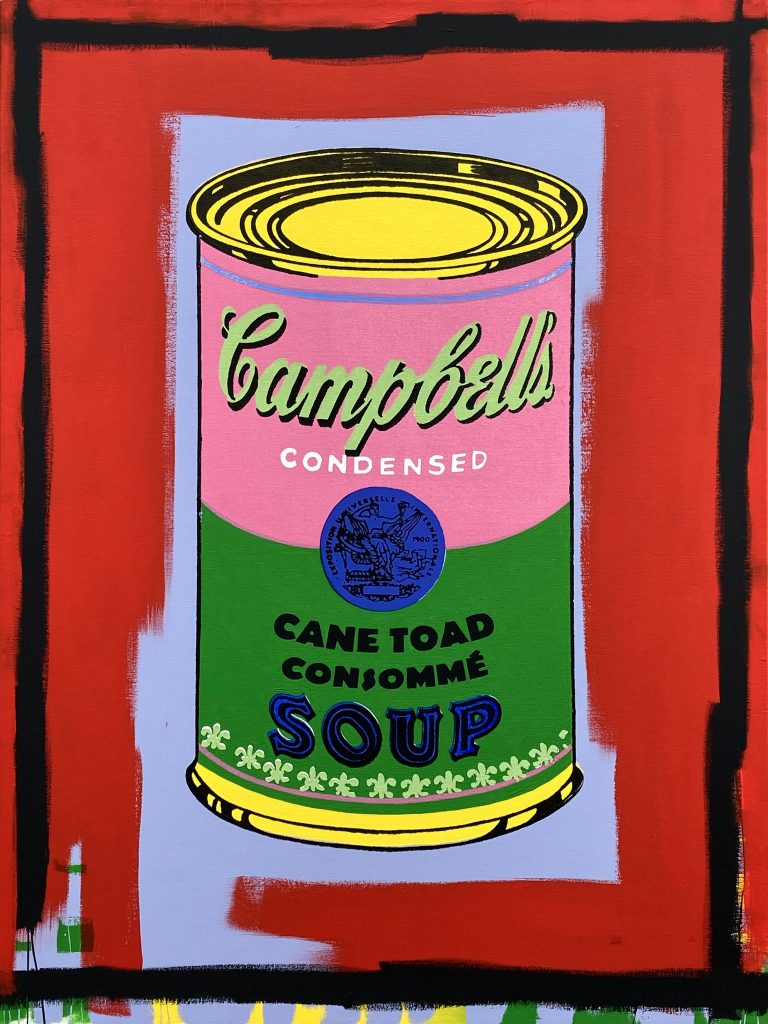
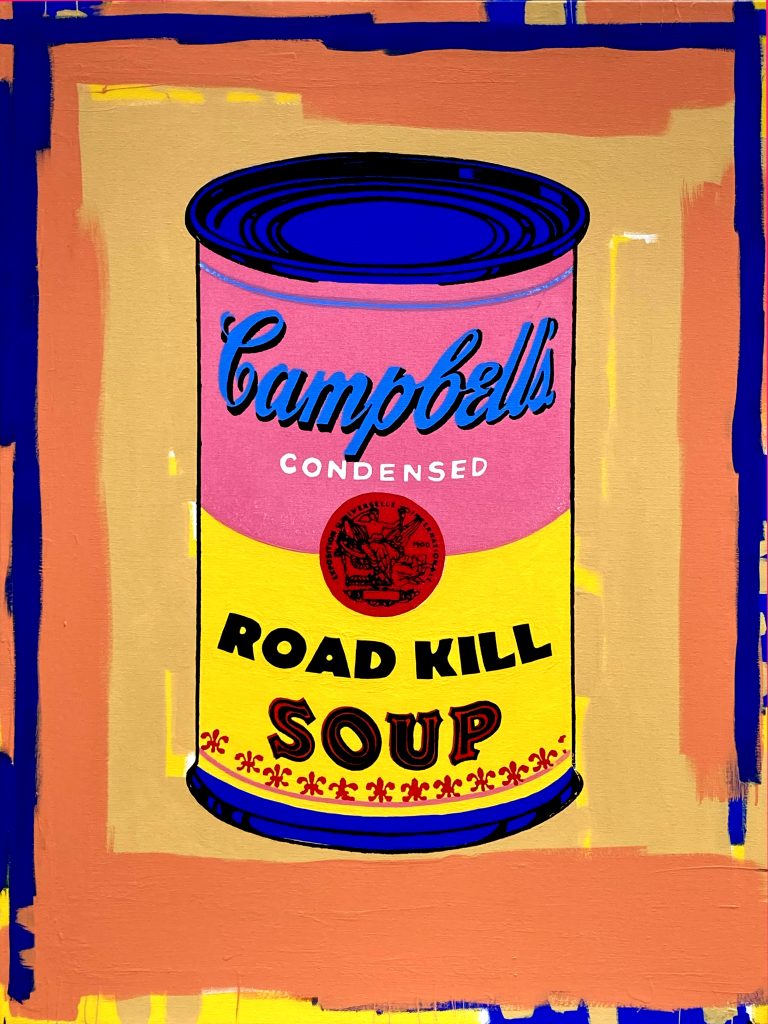
What is the importance of humour in your work?
Humour mitigates being too moralising, particularly with political content. Nobody wants to be hit over the head with a truncheon, visual, metaphoric or otherwise. There’s that old Mary Poppins song about how a spoonful of sugar helps the medicine go down.
Moving to the physical aspects of your work, you have a multidisciplinary practice that spans painting, printmaking and found objects/collage. To what degree do these aspects intersect and/or inform each other when creating a single work?
At this juncture I don’t really think about it much anymore, if at all. Everything is fluid and intuitive in the creative process. I think initially it was my art school lecturers that made me rebel towards a multidisciplinary practice. Their consensus, at the time, was that a painting was a painting, a print was a print and a sculpture was sculpture. For me, however, it was all just art and creativity. When I presented my final year folio of monoprints towards my painting and printmaking modules the moderators and lecturers could not compute and had a collective conniption. It was totally hilarious…
What is the importance of an multidisciplinary approach to your work (be it for the aesthetic or conceptual outcomes)?
I think a multidisciplinary approach allows me more expressive options in the toolbox. For instance I have made a series of pinball machine assemblages to convey the ideas of Albert Camus’ 1942 essay ‘The Myth of Sisyphus’. I was imagining Camus, Satre and Simone de Beauvoir in a 1960s Parisian cafe, playing pinball over a coffee, and Gitanes discussing Sisyphus and the human condition. There is a physicality when using found and constructed objects that a two dimensional, illusory medium, cannot capture as well. Found objects and vintage items are also ‘ready made’ and imbued with their own mystique, strata and storyline that again cannot always be imitated that well. A lot of my paintings also imitate screen-prints visually, but are indeed meticulously hand painted – an homage to my printmaking background and practice. It’s fun to mix things up.
